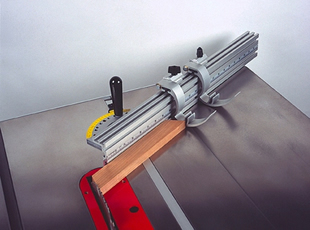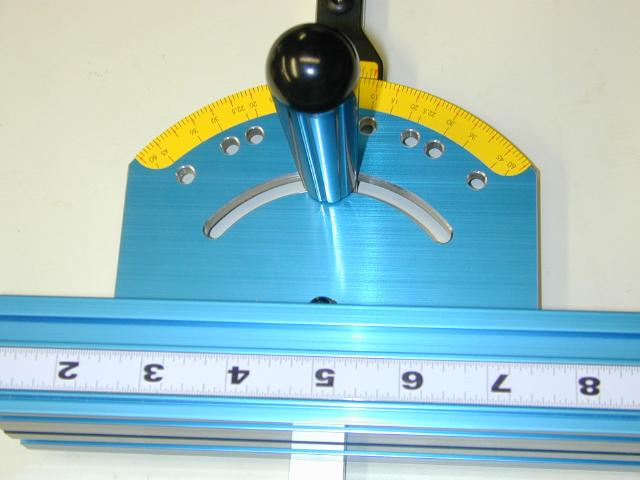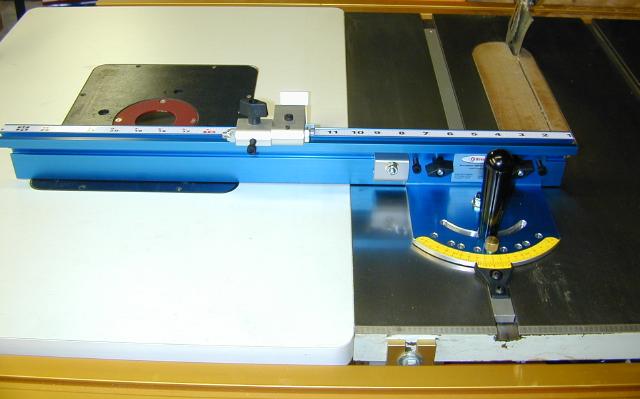Page 3 of 3

Kreg Precision Miter Gauge
by
Bill Esposito
14 Aug 2004
Product Updates
  For various reasons this
review took place over the course of 4 months. During that time I was in
contact with Kreg discussing some issues I found while reviewing the gauge.
Either in response to my inquiries or because of the normal transition
of a new product into production, or both, a number of changes were made
to improve the product. In these pictures you see the most noticeable change...Kreg
blue anodizing. For various reasons this
review took place over the course of 4 months. During that time I was in
contact with Kreg discussing some issues I found while reviewing the gauge.
Either in response to my inquiries or because of the normal transition
of a new product into production, or both, a number of changes were made
to improve the product. In these pictures you see the most noticeable change...Kreg
blue anodizing.
|

